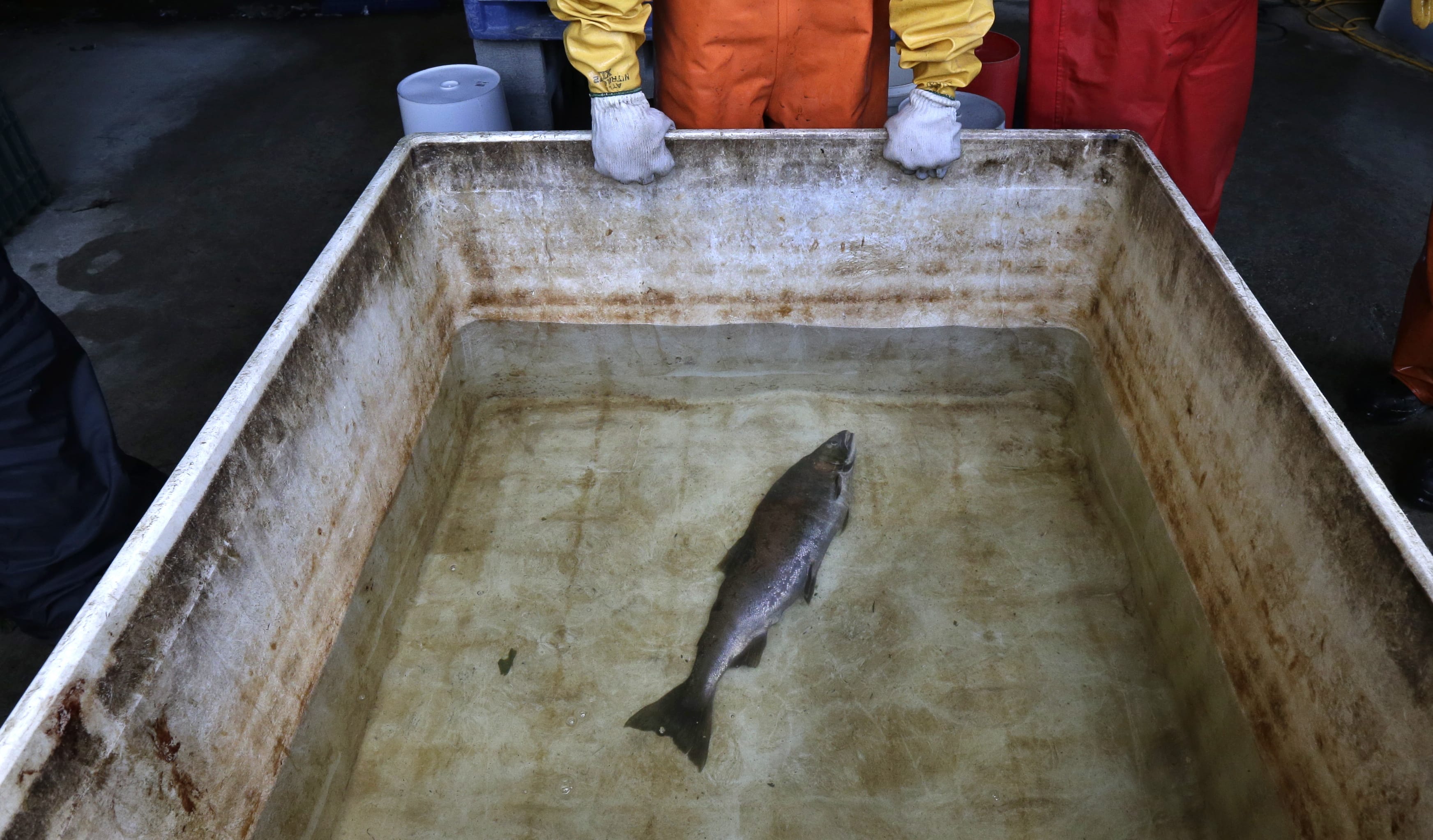A few years ago, scientists discovered that stormwater, a potentially toxic mixture of lawn fertilizers, brake-pad dust and other pollutants, can kill salmon.
New research shows that even when exposed salmon survive, they’re left with reduced abilities to perceive their environment.
In a study appearing in the academic journal Scientific Reports, Washington State University Vancouver researchers, Allison Coffin and Jenifer McIntyre, show that stormwater damages the hairlike sensory nerve cells on the heads of coho salmon. Those cells are critical for the fish’s ability to find food, sense predators and navigate through water currents.
“We’re showing that even if the fish are surviving the stormwater exposure, they still might not be able to detect the world around them as well, which can make it harder for them to find food or more likely for them to get eaten,” Coffin, an assistant professor of neuroscience at WSU Vancouver, said in a news release.
Latest blow to threatened fish
The findings are the latest obstacle in a long list of challenges facing a species that is threatened or endangered along much of the West Coast.
Previous research by Coffin and McIntyre, a WSU aquatic ecotoxicologist, showed that soil-based filtering systems, such as rain gardens, reduced pollution in urban watersheds and could improve fish’s ability to survive. Their latest research shows that filtration systems helped some fish but not coho salmon.
The fish suffered harm in hair cells that exist on patches along both sides of the fish’s heads and bodies in what’s called the lateral line. The hair cells detect vibrations and send signals to the animal’s brain, which are then determined to be sound or motion.
The scientists collected water from state Highway 520 at Seattle. Roughly 70,000 vehicles a day travel the highway to cross Lake Washington, making it one of the most heavily used routes in the state, although still far less traveled than Interstate 5 and other major roadways. They exposed zebra fish larvae, a commonly used fish in aquatic studies, and coho embryos to stormwater and studied the results.
When exposed to stormwater from a June 2014 storm, zebra fish grew hair cells but only about two-thirds the number they would have under healthy conditions. Storm runoff collected a year later from the same location was toxic enough to kill the fish outright. Even after reducing the concentration by 90 percent, the water’s toxicity still caused the fish to grow fewer hair cells.
What’s more, the hair cells of older zebra fish embryos showed less activity when exposed to stormwater from late 2014 and mid-2015.
“These results suggest that developed hair cells survive acute stormwater exposure but that function is compromised,” the authors wrote in their study.
Coho raised in waves of stormwater and freshwater also grew fewer hair cells, though not to the degree of the zebra fish.
Also, the coho that were raised in stormwater were smaller than those raised in freshwater.
When the water was filtered through a bioretention system, the volume of harmful materials was reduced. As a result, the condition of the zebra fish improved, but the coho’s didn’t.
That suggests that not all the toxic chemicals were removed and that salmon are especially sensitive to aquatic pollution.
It’s not entirely clear why the hair cells aren’t developing in the fish’s early stages. Coffin suspects that one or more of the chemicals found in stormwater is interfering with the genetic process that activates those physical characteristics.
While previous studies showed filtering stormwater protects coho from deadly chemical exposures, this study suggests that they do not escape unharmed.
Coffin theorizes that coho were more susceptible to the impact of stormwater because they grow more slowly than zebra fish and thus had longer exposures to the chemicals.
Because there are so many chemicals in stormwater, scientists haven’t pinned down which ones could be harming fish.
“We already knew, aquatic pollutants like stormwater are toxic to the fish — even if they don’t outright kill the fish it makes them less healthy … less likely to survive long term,” she said. “These green stormwater technologies out there, those are really effective. … we need even better ways of filtering the water so the water getting to the fish is as clean as it can be.”




